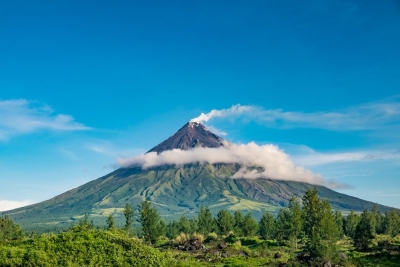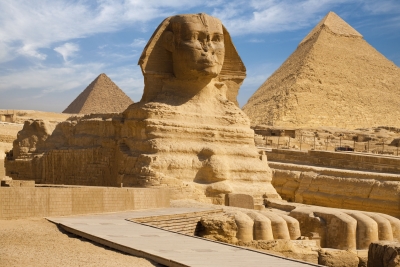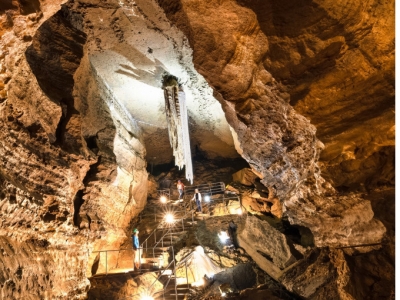
Mayon, located in the Philippines, is a highly active stratovolcano with recorded historical eruptions dating back to 1616. The most recent eruptive episode began in early January 2018 that consisted of phreatic explosions, steam-and-ash plumes, lava fountaining, and pyroclastic flows (BGVN 43:04).
The volcano with its surrounding landscape was declared a national park on July 20, 1938, the first in the nation. It was reclassified as a natural park and renamed the Mayon Volcano Natural Park in 2000. It is the centerpiece of the Albay Biosphere Reserve, declared by UNESCO in 2016, and is currently being nominated as a World Heritage Site.
Mayon is the most active volcano in the Philippines, and its activity is regularly monitored by the Philippine Institute of Volcanology and Seismology (PHIVOLCS) from their provincial headquarters on Ligñon Hill, about 12 kilometers (7.5 mi) from the summit.
Mayon is the main landmark and highest point of the province of Albay and the whole Bicol Region in the Philippines, rising 2,463 meters (8,081 ft) from the shores of the Albay Gulf about 10 kilometers (6.2 mi) away. The volcano is geographically shared by the eight cities and municipalities of Legazpi, Daraga, Camalig, Guinobatan, Ligao, Tabaco, Malilipot, and Santo Domingo (clockwise from Legazpi), which divide the cone like slices of a pie when viewing a map of their political boundaries. Mayon is a classic stratovolcano with a small central summit crater. The cone is considered the world’s most perfectly formed volcano for its symmetry.
Mayon is the most active volcano in the Philippines, erupting over 47 times in the past 500 years. Historical observations accounted its first eruption in 1616. The first eruption for which an extended account exists was the six-day event of July 20, 1766.
Following the declaration of alert level 3 for the volcano, the United States issued an advisory cautioning its nationals from traveling to Mayon. Canada and the United Kingdom also posted advisories discouraging their nationals from visiting the volcano.
The United States government committed $100,000 in financial aid for the evacuees of Mayon. In cooperation with the Philippine government the assistance was delivered through the Philippine National Red Cross and other NGOs by USAID.
Credit : Wikipedia
Picture Credit : Google






